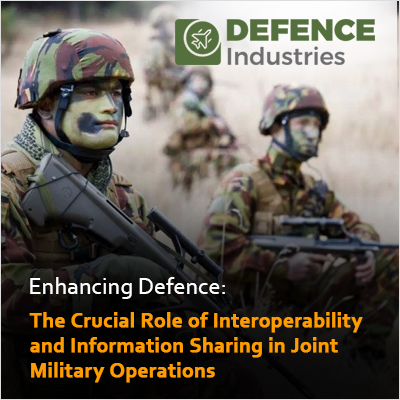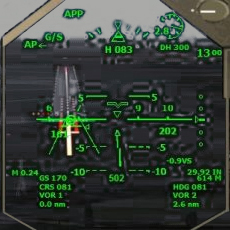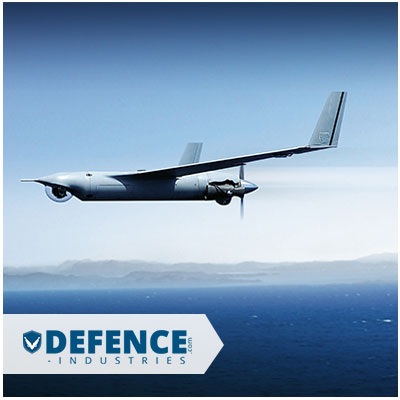Enhancing Defence: The Crucial Role of Interoperability and Information Sharing in Joint Military Operations 25 June 2024

Introduction:
Joint military operations involve the coordinated efforts of multiple branches of the armed forces to achieve a common objective. One of the key elements that determine the success of such operations is interoperability—the ability of different military units to work seamlessly together. This is closely tied to effective information sharing, as communication and collaboration play pivotal roles in the success of any joint military endeavor.
Understanding Joint Military Operations:
Joint military operations are complex endeavors that require a high level of coordination among various branches, such as the army, navy, air force, and marines. These operations can range from large-scale combat missions to peacekeeping efforts and disaster relief operations. The success of these operations depends on the ability of different units to communicate effectively, share information in real-time, and operate in a synchronized manner.
Interoperability: The Backbone of Joint Operations:
Interoperability refers to the ability of different military components to operate together in a cohesive and coordinated manner. In the context of joint military operations, interoperability is essential for ensuring that diverse units can seamlessly integrate their capabilities, equipment, and communications systems. Achieving interoperability involves overcoming challenges related to differences in equipment, technology, and procedures among the various military branches.
One of the key aspects of interoperability is standardization. Establishing common standards for communication protocols, equipment interfaces, and operational procedures is crucial to ensure that units from different branches can effectively work together. This standardization minimizes the risk of misunderstandings, enhances efficiency, and ultimately contributes to the success of joint military operations.
| Also Read: Navigating Geopolitical Uncertainties: Strategies for Defence B2B Partnerships |
The Role of Information Sharing:
Information sharing plays a vital role in the success of joint military operations. In dynamic operational settings, the timely and precise exchange of information is crucial for making well-informed decisions. Successful information sharing facilitates a thorough comprehension of the overall situation among diverse military units, allowing them to coordinate actions and respond effectively to evolving circumstances.
In the context of joint military operations, information sharing extends beyond the traditional boundaries of individual branches. It involves sharing intelligence, logistics data, and real-time updates among the various units involved. This collaborative approach ensures that each component of the joint force is well-informed and able to contribute effectively to the overall mission.
Challenges to Interoperability and Information Sharing:
While interoperability and information sharing are crucial, achieving them in practice poses significant challenges. One of the primary challenges is the diversity of equipment and technology used by different military branches. For example, communication systems that are compatible with naval operations may not seamlessly integrate with those used by the Air Force. Overcoming these technological disparities requires investment in interoperable equipment and the development of common standards.
Additionally, there are challenges related to organizational culture and practices. Each military branch has its own traditions, procedures, and ways of operating. Breaking down these silos and fostering a culture of collaboration and information sharing is essential for successful joint military operations.
Technological Solutions to Enhance Interoperability:
Advancements in technology play a crucial role in addressing the challenges associated with interoperability and information sharing. The development of joint command and control systems, integrated communication platforms, and interoperable equipment significantly enhances the ability of different military units to operate cohesively.
The use of standardized communication protocols, such as the Joint Tactical Radio System (JTRS), facilitates seamless communication between units from different branches. These technologies enable secure and real-time sharing of information, ensuring that decision-makers have the data they need to respond quickly to changing circumstances.
Furthermore, the integration of artificial intelligence (AI) and data analytics can enhance the processing and analysis of vast amounts of information. This capability is particularly valuable in intelligence gathering, enabling military leaders to make more informed decisions based on a comprehensive understanding of the operational environment.
Training and Exercises for Interoperability:
Beyond technological solutions, effective training and joint exercises are essential for achieving and maintaining interoperability. Military personnel must be familiar with the equipment, procedures, and communication protocols of other branches. Joint exercises provide opportunities for different units to work together in simulated scenarios, identifying and addressing challenges before they arise in real-world situations.
These exercises also foster a sense of camaraderie and mutual understanding among personnel from different branches. Building relationships and trust among military units is crucial for effective communication and collaboration during joint operations.
Conclusion:
In conclusion, the success of joint military operations hinges on the twin pillars of interoperability and information sharing. These elements enable diverse military units to work together seamlessly, combining their strengths and capabilities to achieve common objectives. While challenges exist, advancements in technology, training initiatives, and the cultivation of a collaborative culture within the military are key to overcoming these obstacles.
As we celebrate the progress made in enhancing interoperability and information sharing, it is crucial to recognize that these efforts are ongoing. The dynamic nature of modern warfare demands continuous adaptation and improvement in order to meet the evolving challenges of the global security landscape. By prioritizing interoperability and information sharing, military forces can ensure they are well-prepared to address the complexities of joint operations in the future.







